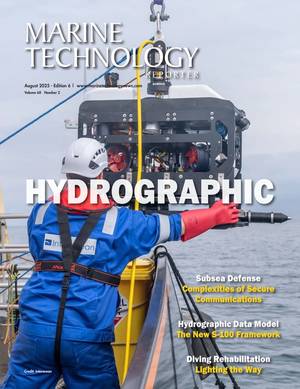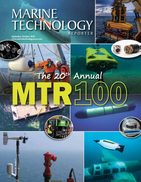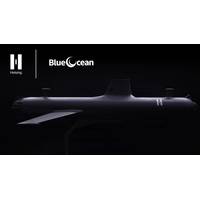
Helsing to Acquire Australian AUV Specialist Blue Ocean
German defense technology company Helsing has started a process of acquiring Blue Ocean, an Australian-based ocean technology company that designs, develops, and operates autonomous underwater vehicles (AUVs).The acquisition will integrate Blue Ocean’s hardware and manufacturing capabilities with Helsing’s Artificial Intelligence (AI), integrating Blue Ocean’s team and operations into Helsing, with operations continuing in the UK and Australia.Together, Helsing and Blue Ocean aim to accelerate the development and mass production of autonomous platforms for the protection of the

James Bellingham Introduces New Book on How Marine Robots Shape Our Future
Marine technologies expert James Bellingham introduces readers to the compelling world of contemporary undersea exploration, and the vital role autonomous robots play across commercial, military, and academic fields in his and Claudia Geib's new book.In How Are Marine Robots Shaping Our Future? James Bellingham draws on decades of expeditions from the Arctic to the Antarctic to reveal how autonomous underwater vehicles (AUVs) are changing how humans explore and work in the ocean. These robots endure crushing pressures, freezing waters, and total darkness—collecting data vital for climate
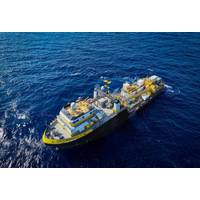
Oceaneering Upgrades Survey Vessel for Simultaneous Autonomous Missions
U.S.-based subsea services and technology firm Oceaneering has completed a major upgrade of its Ocean Intervention II oceanographic research vessel, equipping it to perform simultaneous autonomous offshore survey missions.The retrofit, carried out in early 2025 on the 25-year-old vessel, has made it capable of launching and recovering both uncrewed surface vehicles (USVs) and autonomous underwater vehicles (AUVs).The vessel, originally launched in 2000 for geophysical and geotechnical survey work, has been outfitted with new navigation systems, hull-mounted sensors, cloud-enabled data infrastructur
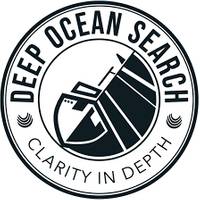
Deep Sea Vision, Deep Ocean Search Enter MoU
In conjunction with the launch of its brand-new Mariner XL ROV, Deep Ocean Search (DOS) Ltd entered a Memorandum of Understanding with the US company Deep Sea Vision (DSV).DSV is a deep-water survey company using Autonomous Underwater Vehicles (AUVs) such as Kongsberg Hugin 6000 able to dive at 6,000msw depth with a track record in the deep ocean space. Through combined efforts to common clients, DSV and DOS can offer AUV and ROV services from the same platform with shared multirole personnel. With Mariner XL, DOS is offering for hire a 6000msw capable WROV which can be mobilized quickly and
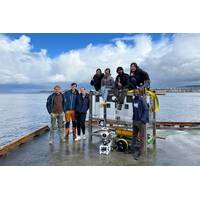
Blueye: Making An ROV Autonomous
Leonard Günzel, a PhD candidate at the Department of Marine Technology at NTNU, is currently leading a new project to make the Blueye ROVs autonomous. The goal of the project is to eliminate the tether connected to the Blueye Surface Unit and enable the ROV to operate independently from a docking station placed on the seafloor.'Blueye ROVs are connected via a tether to ensure fast, stable, and reliable communication between the drone and the operator. The tether enables real-time data transmission directly to the surface, providing operators with live video and sensor data essential for

Xsens Announces New OEM Inertial Measurement Unit
range of -40°C to 85°C. The sensor’s small size, light weight, high performance and robust construction provide outstanding value in applications such as:Camera/payload stabilization, including SOTM (SATCOM-on-the-Move) devicesMarine equipment – remotely-operated vehicles (ROVs), autonomous underwater vehicles (AUVs), sensor buoysMobile robots and autonomous mobile robots (AMRs)Drones and 3D mapping and surveying toolsHumanoid robotsThe new sensor is available in three versions:IMU providing calibrated inertial sensor dataVertical Reference Unit (VRU) providing accurate, calibrated

Strong Winds, Calm Seas
for long-lasting systems that are not destructive to local biodiversity. The SeaMe project (Sustainable Ecosystem Approach in Monitoring the Marine Environment), set to run from 2024 to 2026 at an RWE AG wind farm in Kaskasi, Germany, is trying to do just that. With innovative technologies like autonomous underwater vehicles (AUVs), researchers can conduct comprehensive ecosystem monitoring that is less costly, invasive and CO2-intensive. Findings will highlight the overlap between offshore wind farms and the local ecosystem by collecting physical and biological data. Parameters like temperature
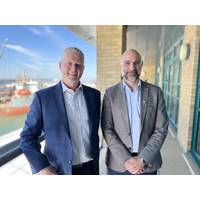
John Siddorn, CEO, National Oceanography Center
;s National Oceanography Centre (NOC).Today, NOC is based in Southampton and Liverpool and has quickly become one of the most advanced centers for integrated oceanographic research and engineering worldwide. With a staff of more than 600 and assets ranging from deep-sea research vessels to fleets of autonomous underwater and surface vehicles, NOC serves as the UK’s principal marine science body.For Siddorn, who began his career as a physical oceanographer in the 1990s and spent significant time at the UK Met Office developing coupled ocean-atmosphere models, the role at NOC is the culmination of
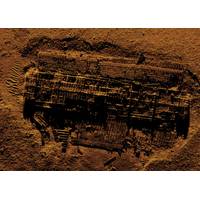
Kraken Robotics Banks $3m in SAS Sales
SAS systems will be integrated on small and medium-class uncrewed underwater vehicles (UUVs) for clients in Asia Pacific, Europe, and North America.One of the orders is for the University of Southern Mississippi’s Roger F. Wicker Center for Ocean Enterprise, which will be outfitting a variety of autonomous underwater vehicles (AUVs) and autonomous surface vessels (ASVs) with Kraken SAS to support research, development, testing, and evaluation activities.Kraken SAS integrates the capability to perform imaging and bathymetric mapping simultaneously, offering user selectable 3 cm x 3 cm or 2 cm x 2

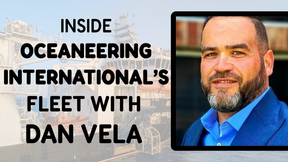
 August 2025
August 2025
